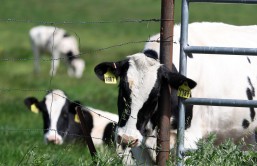Ancient Iranian Farmers were learning the trade at the same time as the West, and it spread across the region very quickly.
New research revealed farming caught on across the entire Iranian Fertile Crescent at once, and not in one epicenter as was previously believed, according to a American Association for the Advancement of Science news release.
During the last few decades, numerous archaeological excavations were conducted in the Near East that led researchers to consider the possibility that multiple regions in the Fertile Crescent began cultivating cereal grains roughly at the same time, rather than just a single core area," Simone Riehl from the University of Tübingen in Germany, said.
Artifacts suggested farmers began harvesting grain between 9,800 and 12,000 years ago. This means people living in the Fertile Crescent were starting to grind cereal grains at the same time as the west.
Plant remains at an excavation site go back as far as 2,000 years. The artifacts show Chogha Golan's ancient inhabitants cultivated wild barley, wheat, lentil and grass peas to start, and eventually moved on to emmer wheat.
"Plentiful findings of chaff remains of the cereals indicate that people processed their harvest within the sites they were living in," Riehl said. "Mortars and grinding stones may have been used for turning the grain into some kind of bulgur or flour, which may have been further processed either by cooking or roasting."
The tools were multi-purpose, and could have been used to for other uses other than plant-processing.
The researchers hope to study how the knowledge of farming was spread so quickly throughout the region.
"For some time, the emergence of agriculture in Iran was considered as part of a cultural transfer from the west," Riehl said. "This opinion was, however, mostly based on the lack of information from Iranian sites."
"We meanwhile assume that key areas for emerging domestication existed over the whole Fertile Crescent, and that there were several locations where domesticated species evolved as a result of cultivation by local human groups This does not, of course, exclude the possibility of some kind of transfer of ideas and materials between the different groups populating the Fertile Crescent," he said.
Related Articles:
Snails Reveal How Ireland Was Colonized 8,000 Years Ago
Ancient Maya City Discovered In Jungle








